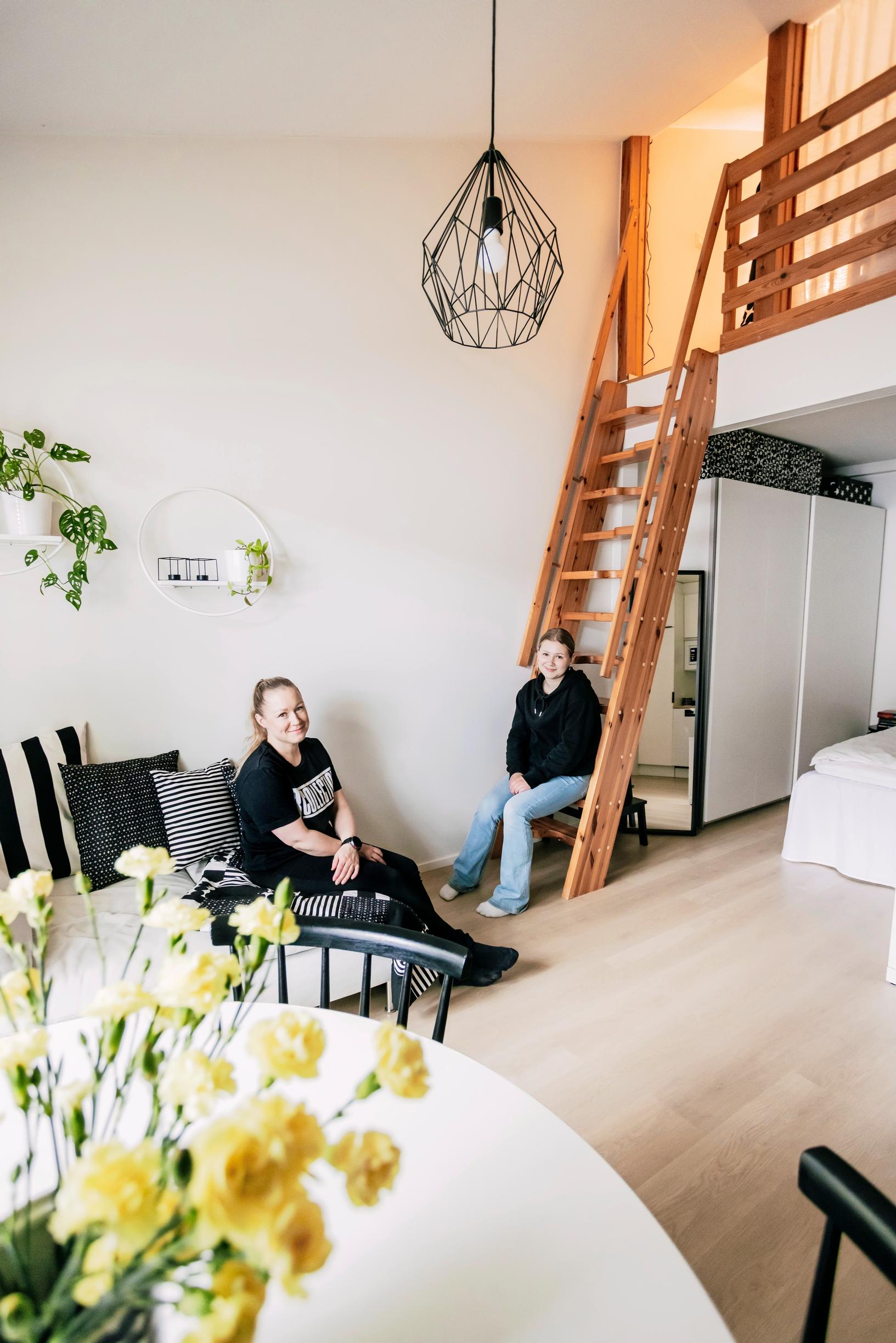
Mom and teen share a studio: “A big single-family house wasn’t right for me”
A year ago, 41-year-old Finn Sini Toivola and her 17-year-old daughter Nelli moved into a lofted studio apartment. They’ve pared down their belongings to a minimum, and privacy comes from using curtains. The small home also made it possible for Sini to take a job alternation leave.
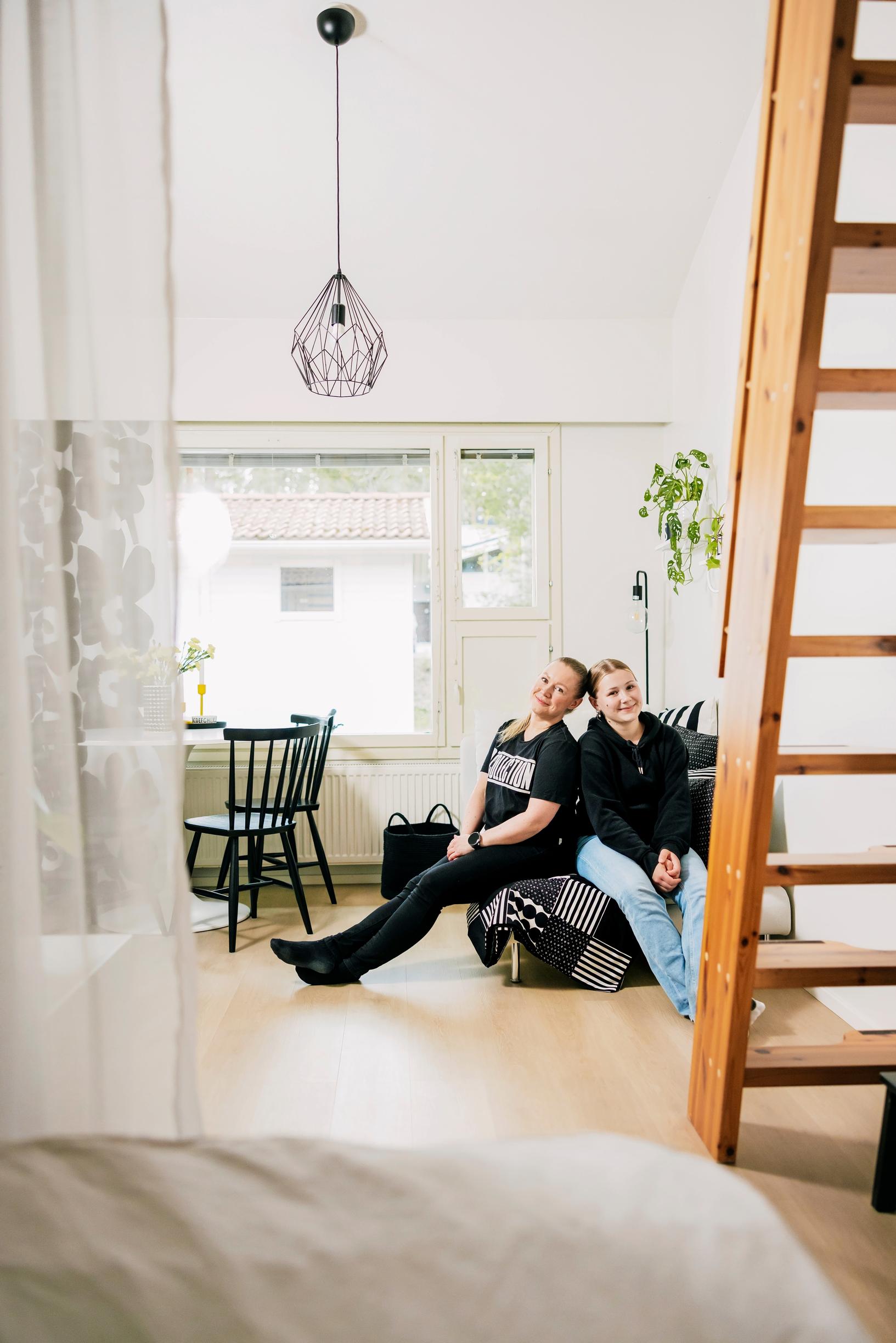
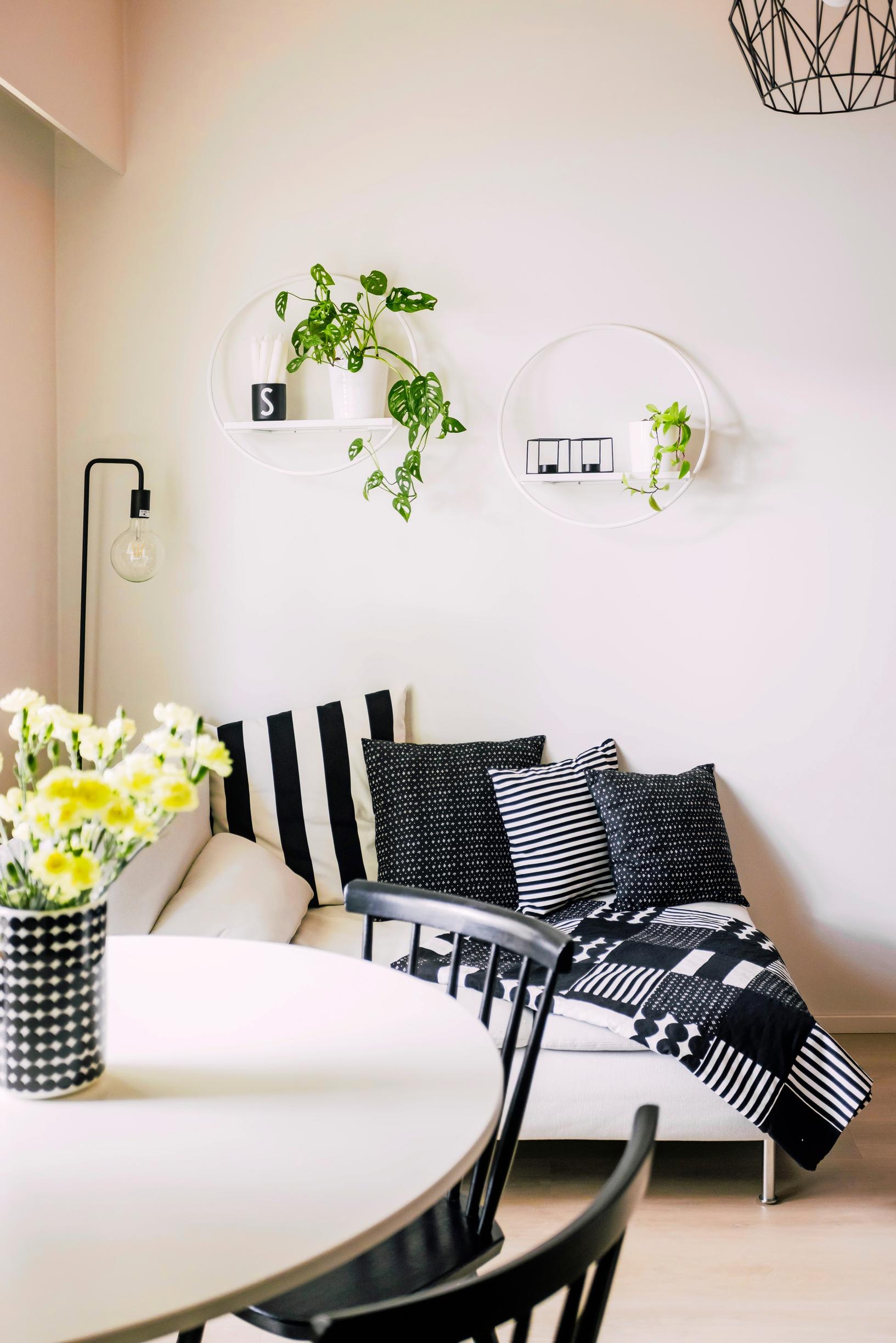
Sini Toivola, 41, Seinäjoki:
About four years ago, I lived in a 100-square-meter (approx. 1,076-square-foot) home with my boyfriend and, every other week, my two daughters. However, our living arrangement caused friction in our blended family, so my partner and I decided to ease the situation by moving to separate addresses but staying close to each other.
At first, I looked at three-room apartments, but I realized I’d be there half the time by myself when the kids were at their father’s. Then I found a clever 50-square-meter (approx. 538-square-foot) two-room apartment where I could use furniture to divide the bedroom into separate spaces for my daughters.
When my older daughter moved away to study, I started dreaming of living in a row house. I’m into biking, and I loved the idea of heading off-road directly from my front door. I came across a 30-square-meter (approx. 323-square-foot) studio with a loft. At the viewing, I realized the eight-square-meter (approx. 86-square-foot) loft was nearly the size of a regular bedroom. It was easy to decide to buy.
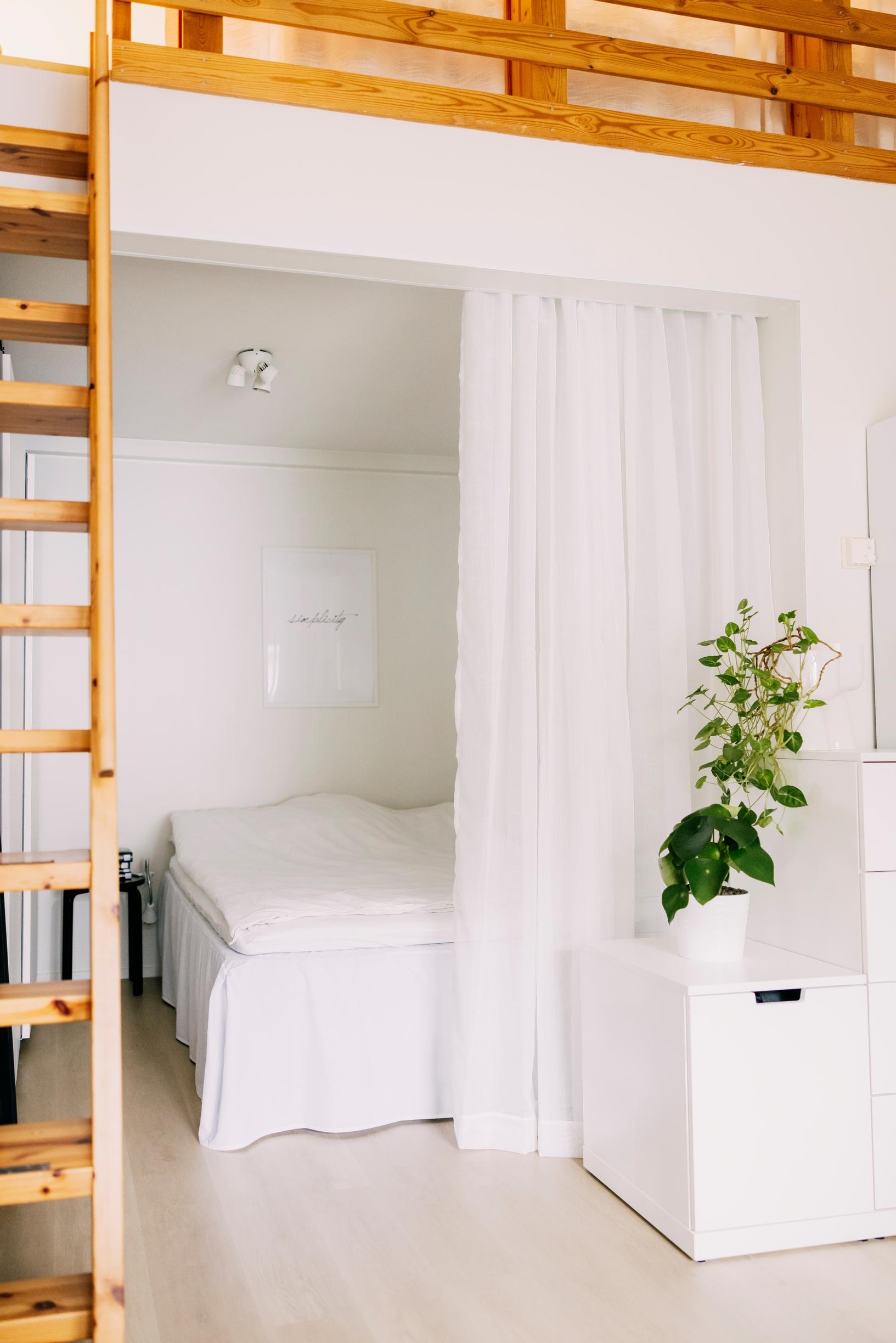
I often think about what is truly necessary to own. I’ve been ruthlessly paring down my belongings for years.
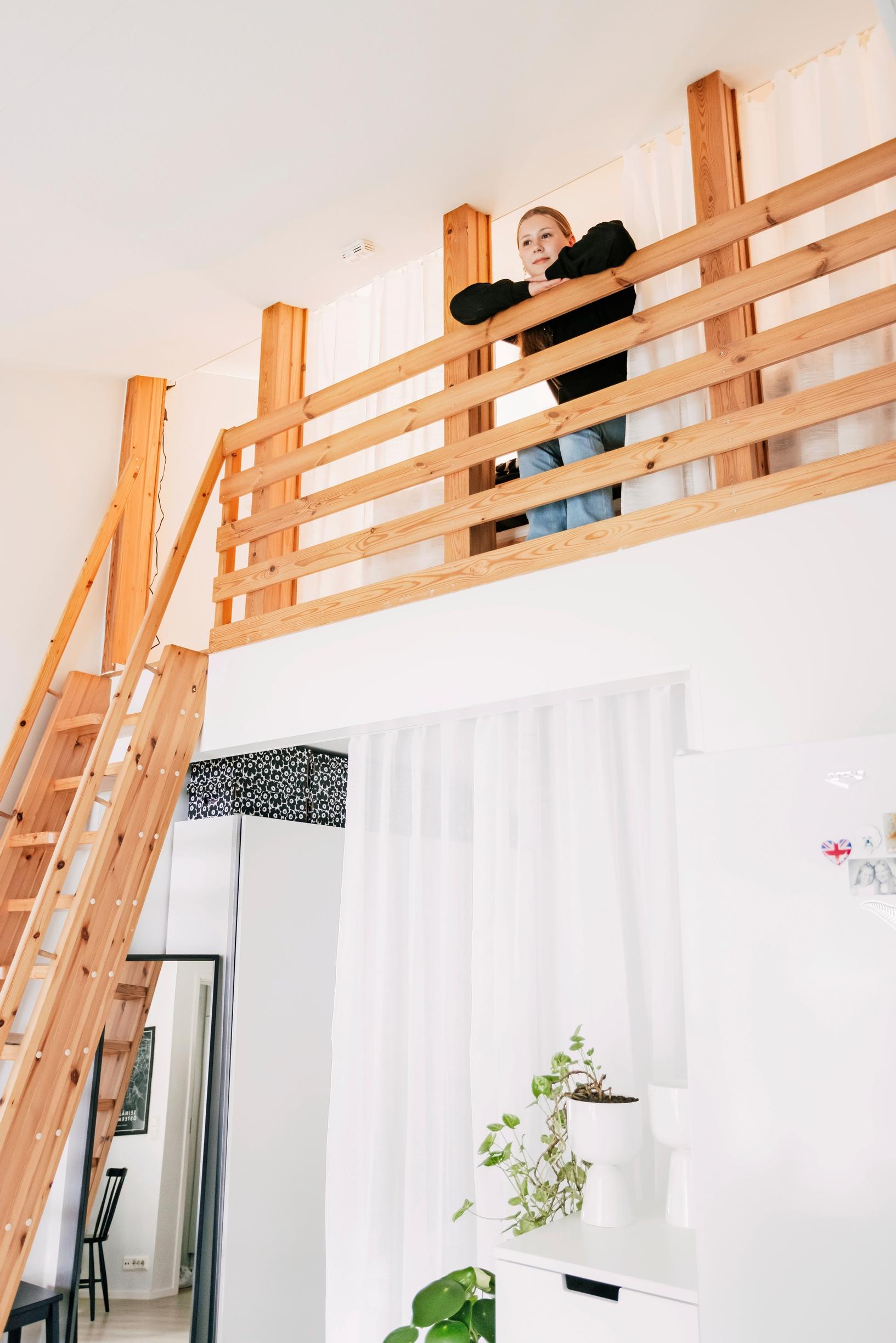
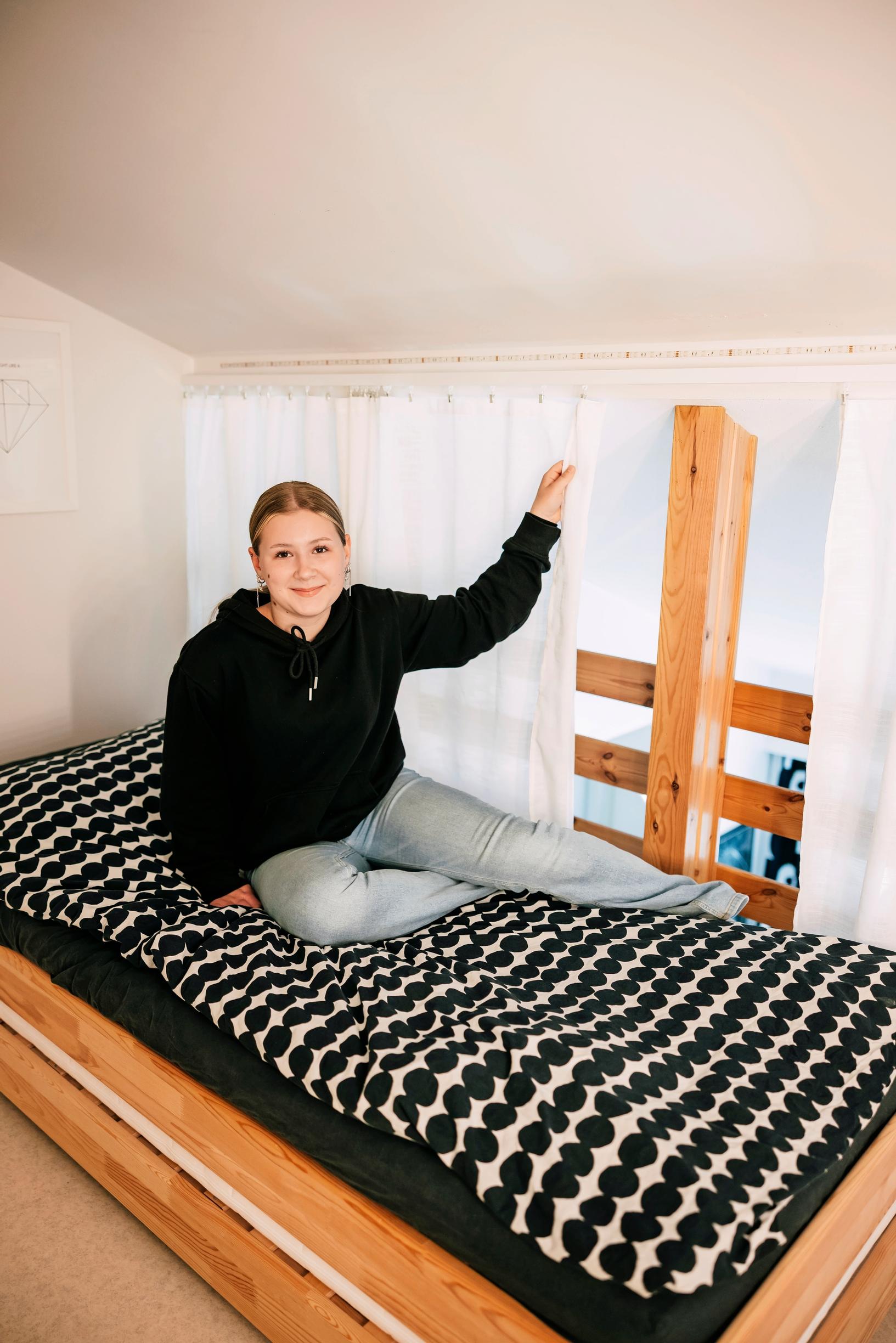
The loft is my 17-year-old daughter Nelli’s domain when she stays with me every other week. I live below in an alcove separated by a curtain. The loft is also enclosed by a curtain, so it’s easy to retreat upstairs in peace.
We both get plenty of time to ourselves at home, because I work shifts at a store, and my daughter has her own activities and hobbies. When we’re home at the same time, neither of us can vanish to another part of the house, so we end up cooking together or chatting downstairs.
I often think about what is truly necessary to own. I’ve been ruthlessly paring down my belongings for years, and each time I move, I shed more. Just today, I posted some new for-sale listings online.
For instance, I replaced my coffee maker with a French press, and we haven’t had a TV in years. Besides the beds, our home only has a small kitchen table, a chaise that serves as a couch, a couple of small dressers, and a makeup table for my daughter. Because the apartment had limited storage, I bought a wardrobe for myself with the idea that everything I own would fit in it. In addition to clothes, I keep bedding, towels, my sewing machine, and my hobby gear there.
When you’re not constantly driven to buy things or spend money on housing, you can save more. Last year, I took six months of job alternation leave.
I used to live in a single-family house, and I realized even then that it wasn’t right for me. There’s an assumption that once you’re in your forties, you should live large, and that anyone in a small home must be poor. Even when I moved into a two-room apartment, people asked if I had no choice but to pick such a small place. I’d tell them that wealth and home size don’t determine whether life is good and happy. I’m very content with my life, even though everything is small and simple. I value the belongings I have and think carefully about new purchases.
When you’re not constantly driven to buy things or spend money on housing, you can save more. I always keep a buffer and a travel fund in my bank account. I haven’t worked full time in years because I haven’t needed to for financial reasons. Last year, I took six months of job alternation leave. I went through all the belongings in my two-room apartment, traveled, took day trips, hiked, biked, and did the kinds of things everyday life usually doesn’t allow enough time for.
This studio isn’t my forever home, but we’ll stay as long as my daughter lives with me. My dream home is a 30–40-square-meter (approx. 323–431-square-foot) tiny house. I have no desire to move into a bigger place again.
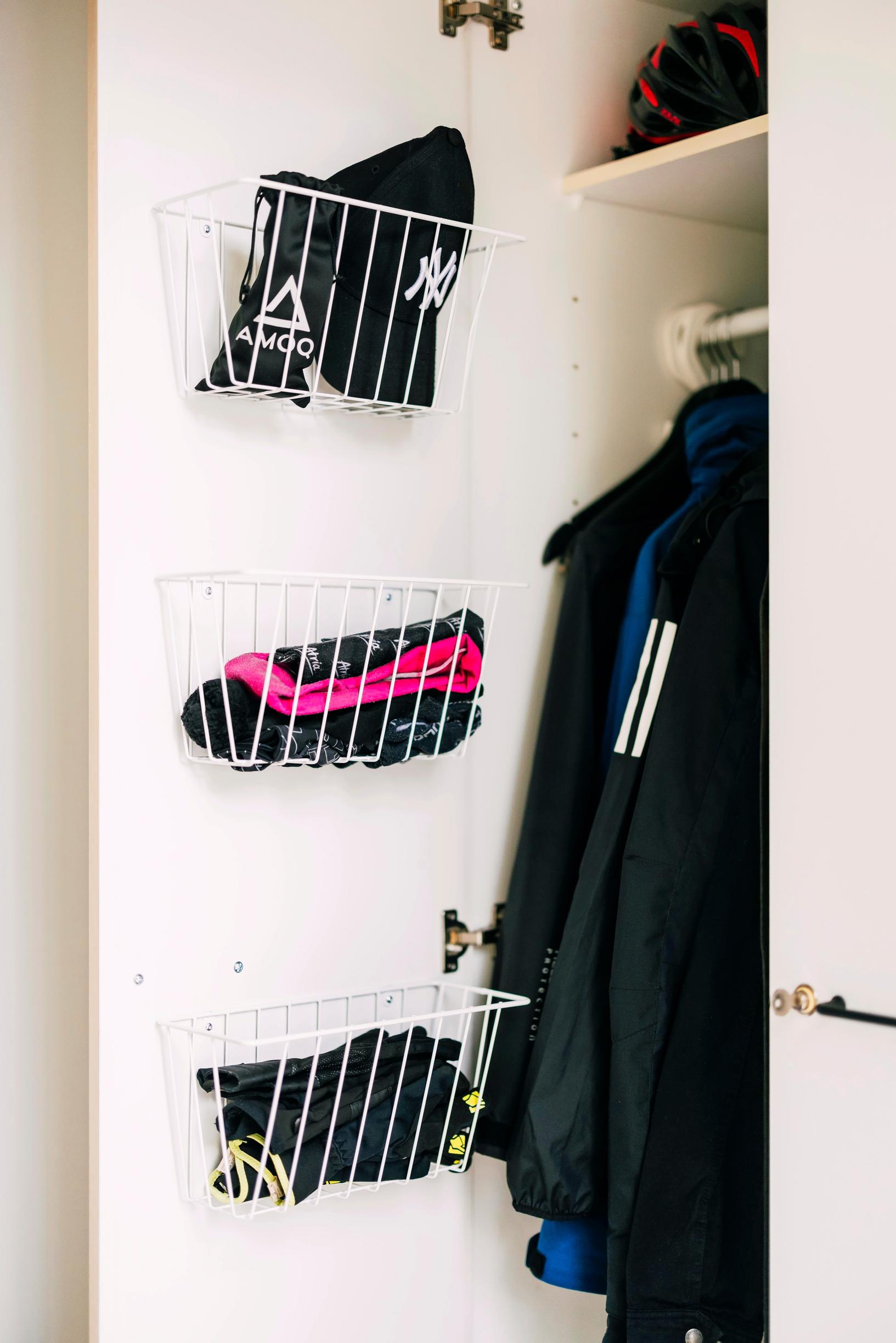
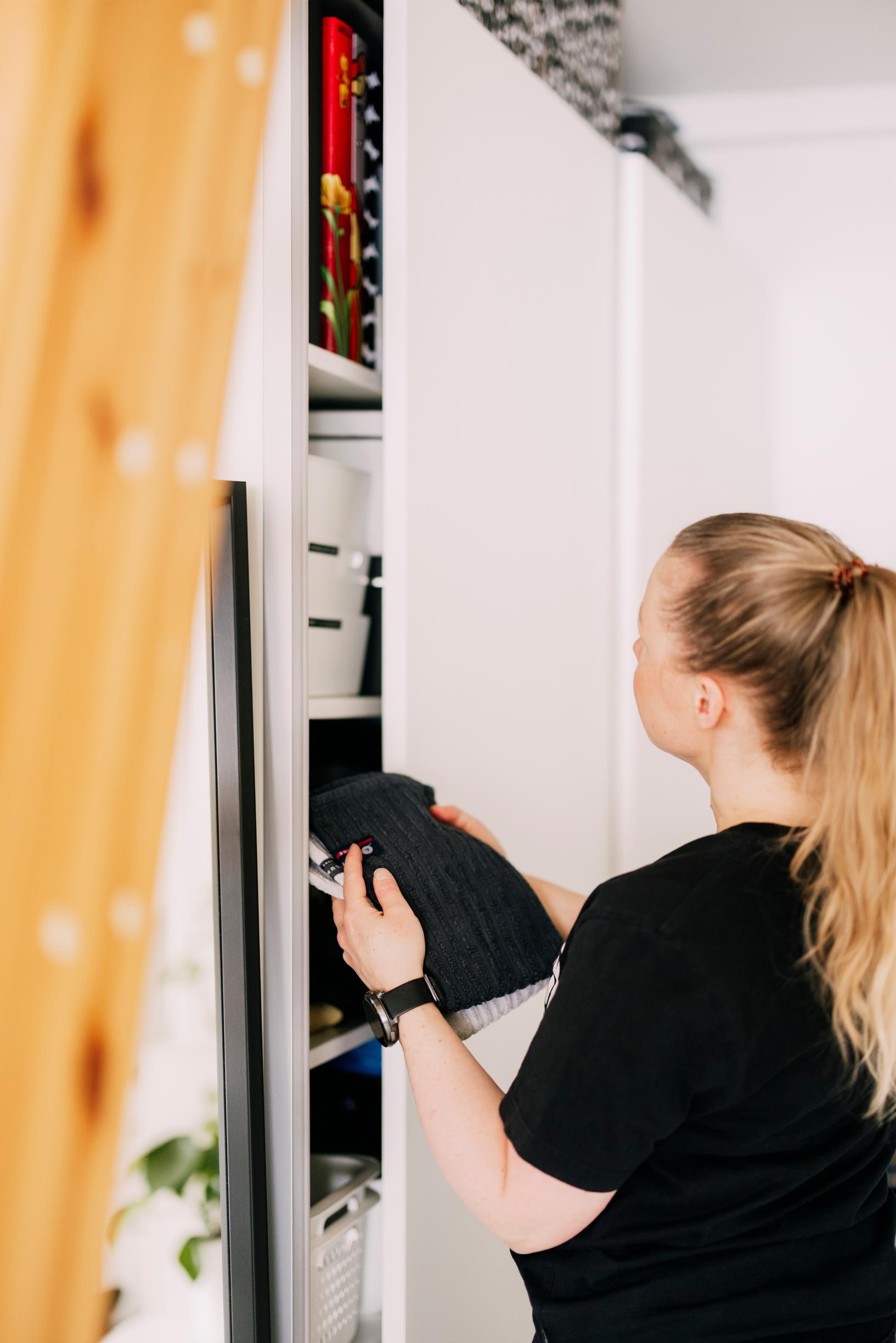
How do you make the entryway functional?
“A small entryway works when only the clothes for the current season are out. It helps if you have a moderate number of clothes, shoes, and accessories. In our entryway, we have five jackets and five pairs of shoes total. I also keep my sportswear and shoes to a minimum and focus on versatility.”


